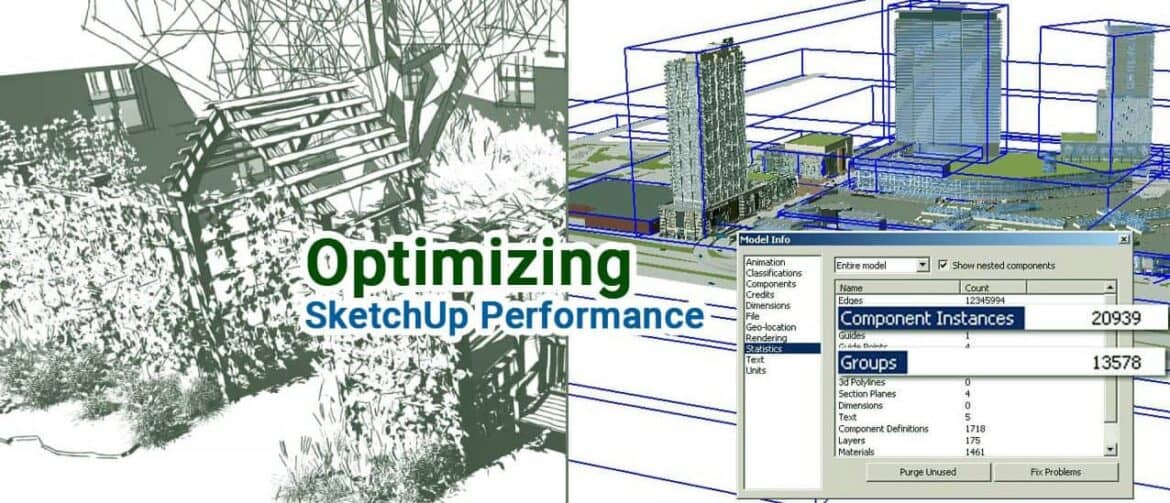Not all of us are working with behemoth graphics cards with a tankful of RAM and processors like Sonic the hedgehog. Most people who use SketchUp are not extremely rich and cannot afford an expensive computer with excellent performance.
This leaves us with a big problem – the performance of your SketchUp.
Reasons for a slow-performing SketchUp
SketchUp is a 3D design and modeling software. As such, the entire workspace depends upon the 3D rendering capability of your computer. Yes, much like computer games. The better games run on your computer, the better any 3D design software will run on it.
GPU
This 3D rendering in a computer is generally handled by the graphics card of your computer. The more powerful it is, the better SketchUp will work. Most graphics cards are geared towards gaming – but they handle designing as well. Very few models are available dedicated to designing Software (and they don’t run games too well), but they are prohibitively expensive.
CPU
The processor of your computer also plays a good role in your SketchUp performance. The rendering work is handled by the GPU, but unless the software is capable of fully utilizing the CUDA (or similar) computational support of the GPU (if it has that), most of the background calculations are going to be handled by the CPU only. Obviously, it’s better if you got a good processor with true multithreading capacity.
RAM
While a program runs, it sits in the RAM (random access memory) of your computer. The bigger the program is, the more space will it require. Plus, it needs additional space for the thing it is working on. SketchUp is not a very big program, per se (some versions of MS Office are larger than some versions of SketchUp). But the 3D models it works upon? They can be huge. All that is held in the RAM while working. So unless you got enough of that, your SketchUp will suffer frequent stutters and hang-ups.
How to increase the performance of your SketchUp
Purge unnecessary stuff
Right at the beginning, delete the model at the corner and purge the workspace. This will get rid of unnecessary stuff and keep your model lightweight, thus reducing strain on your computer. Keep purging often, especially after doing a complicated operation. Also, fix your model from the model info statistics option. This will clear up anything else that may cause problems and slowdowns.
Deactivate needless features
While edge profiles do look great and help in building your model, you can still work without them. It needs a lot of graphics power but you don’t really need it. There are more features like that like shadows and colors you can work without. Deactivate them all to get substantial performance boosts in your SketchUp.
Leave decorations till the end
Decorative stuff like textures on surfaces and such consume a lot of processing power. You do need them to make the model pretty and somewhat realistic, true, but you can let it wait till the end. They consume a lot of space in the RAM which you can save till you really need it. On the same note, try using the original SketchUp materials instead of using third-party resources. These materials are well-optimized and very usable.
Use Low Details
This is a very important step in increasing SketchUp performance. While you are working, you don’t really need to see too many details. You know it’s going to be a curve even though now it looks like a few straight lines arranged in angles. The more detail you use in curved lines and surfaces, the more processing power it needs. Lower the number of segments in your curves and you will get a great boost in processing.
Wireframe is faster
One complaint we often hear is how long it takes for SketchUp to open an ongoing work. True, if you have put a lot of stuff in the model, SketchUp has to load all that while opening, right? However, if you go to wireframe mode and then save it before closing up, next time SketchUp opens the file? It won’t have to load all those assets anymore. They will be loaded only when you need them.


